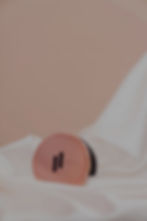
Injection molds are a critical production process in many industries. Different types of material in molten form are injected into the mold, cooled and solidified. In this process, wear and corrosion occur in the molds. Thermal changes due to reasons such as rapid heating and cooling can shorten the life of your mold.
PVD coating allows a thin ceramic-like film to be coated on top of your molds. Thanks to this thin but extremely durable film, your molds are no longer the first layer to resist abrasive chemicals and thermal changes. So how does PVD coating extend the life of the molds?
Increased Hardness and Abrasion Resistance: PVD coatings add a hard surface layer to the mold, making it wear resistant . This is particularly useful when molding with abrasive materials such as glass-filled polymers.
Reduced Friction: PVD coatings minimize the friction between the mold surface and the plastic material. Reduced friction allows the molded part to be ejected more easily, resulting in less wear on the mold.
Corrosion Resistance: Many plastics, when melted and injected, release gases that cause corrosion. PVD coatings develop a barrier that protects the underlying molding material from these gases, allowing products with less error tolerance to be produced for a long time.
Improved Release Properties: Some PVD coatings have anti-adhesive properties, which prevents the plastic material from sticking to the mold. This reduces the need for mold release mechanisms and prevents mold damage.
Thermal Stability: PVD coatings can provide thermal barriers that distribute heat consistently, promoting a uniform cooling process. This consistent thermal cycling prevents the die from experiencing rapid thermal expansion and contraction, which prevents premature die failure.
Commonly Used PVD Coating Alloys for Plastic Injection Molds
Titanium Nitride (TiN): A popular gold-coloured coating known for its hardness and ability to protect against corrosion.
Chrome Nitride (CrN): It offers excellent protection, especially from acidic by-products of some plastics.
Titanium Carbonitride (TiCN): A variant of TiN, this material has increased wear resistance and is especially useful when working with abrasive materials.
Zirconium Nitride (ZrN): Offers excellent wear protection and is often used when a different color (pale gold) is desired for aesthetic or identification purposes.
AlTiN (Aluminum Titanium Nitride): Beneficial for high temperature applications with its hardness at high temperatures.
DLC (Diamond-Like Carbon): Although not technically a metal alloy, DLC coatings are known for their low coefficient of friction and extreme hardness, which results in high cycle rates. It is especially valuable for see-through patterns.
As a result, by adding PVD coatings to plastic injection molds, manufacturers not only extend the operational life of the mold, but also maintain consistent product quality, reduce downtime and save cost in the long run.
You can contact us contact us about mold coating prices and applications.
%20(1).jpg)






















